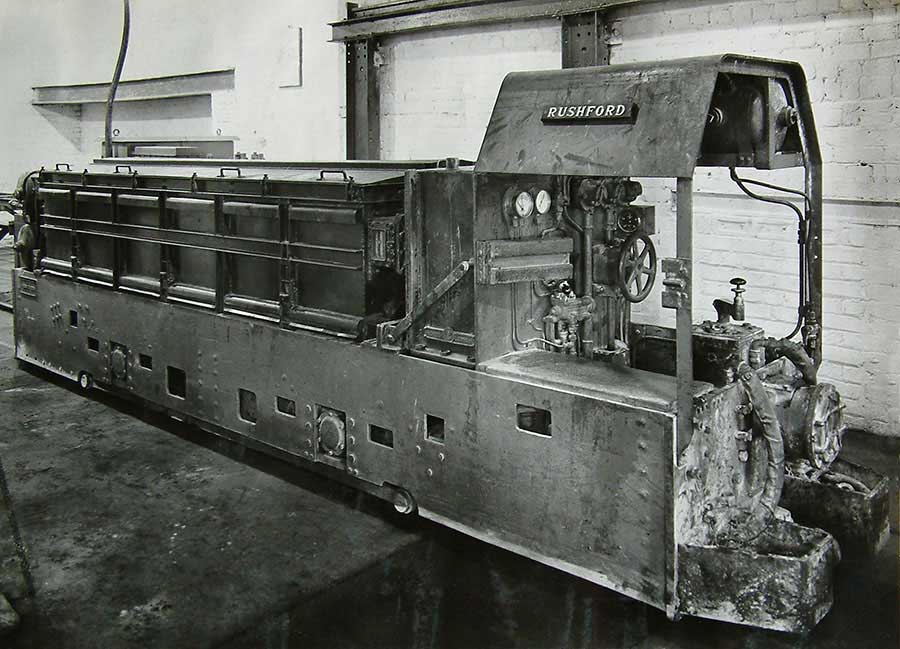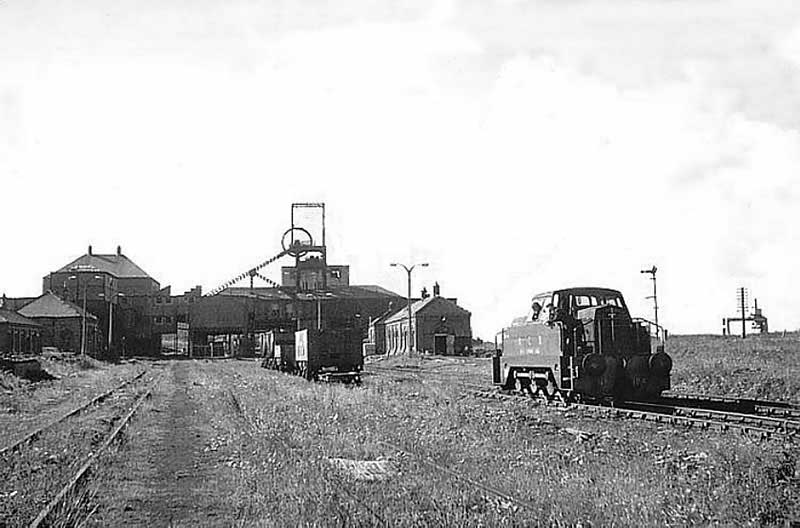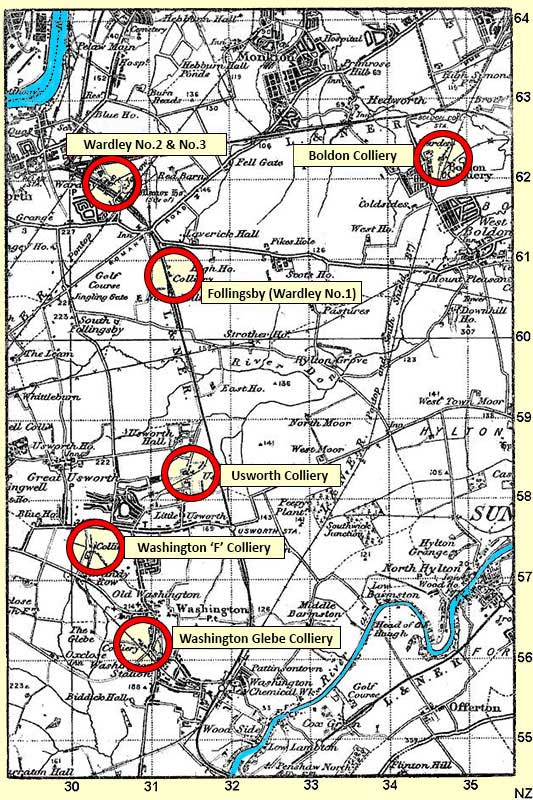Washington County Durham
HOME WHAT'S WHERE
Memories of Mining
Wardley / Usworth - Combined Mine

WARDLEY COLLIERY - No.2 SHAFT LANDING, 1480 LEVEL
Part of the Wardley / Usworth combined mine but NOT the
locomotive road connecting the two Collieries.
This is the scene that greeted the miners of Wardley Colliery when they stepped out of the No.2 Shaft cage into the 1480 Shaft Landing (pron: fourteen-eighty.) It was the lowest of two working levels in the 1960s. The other was 220 feet higher up the shaft - the 1260.
The roadway (tunnel) curving to the left led to the coal faces, a couple of miles away. Each shift of men were transported from this landing by an English Electric battery locomotive hauling a Manrider (train). They travelled to an 'inbye' landing where they dispersed to their various workplaces. Straight ahead led into the 1480 Loco Battery Charging Station.
Mined coal was hauled 'outbye' in large mine cars to be raised by cage to the 1260 level. The coal was then hauled by another set of E.E. locomotives to the Wardley No.1 Shaft (at Follingsby Colliery) to be raised to the surface, washed and graded. The 1260 level Loco Road continued (underground) beyond Follingsby to Usworth Colliery - because Usworth coal was also transported by E.E. locomotives to be raised at Follingsby Colliery. When Wardley Colliery closed, Usworth coal continued to be raised at Follingsby.
N.B. a) Wardley/Follingsby & Usworth Collieries shared the coal preparation plant at Follingsby but had separate Management & Staff.
b) Wardley No.3 was an Upcast Shaft i.e. used air was drawn out of the mine by a large fan. (Downcast Shaft: Fresh air drawn in.)
Personal aside: Hello Tom.
Remember when you and your apprentice were checking specific gravities in the 1480 loco battery charging station
and you accidentally splashed electrolyte in your eyes? Good job we had plenty distilled water!

No. 3353 - RUSHFORD
One of the English Electric Locomotives used to haul Usworth Coal to Follingsby Colliery
( Named after Overman, Jim Rushford. )
Wardley Colliery had the distinction of receiving the first-ever English Electric four-wheeled Battery Electric Locomotive. It was built by English Electric Baguley Ltd as No. 3353. This Loco was ordered in January 1950 but was not delivered until May 1952. It is seen underground in the above picture. Locomotives with a cab at one end (‘single-ended’ locomotives) were banned by legislation in 1957 (with certain exceptions) and thereafter all long underground locomotives had cabs at both ends (‘double-ended’). The naming of an underground locomotive was very rare. [ I'm informed that, "There is little doubt the RUSHFORD name plate was a 'joke' that stuck." ]
By 1956 a locomotive road to link Wardley Colliery with Usworth Colliery was being driven. Under the re-organisation of January 1959, Wardley No.1 (Follingsby) became the coal-drawing unit for the group. Usworth Colliery was working the Hutton, Harvey, Tilley and Busty Seams and its coal was taken to Wardley No.1 along the new 1260 locomotive road linking the two collieries. Coal was loaded into 3-ton mine cars (very big tubs), usually in sets of 30 mine cars. The battery charging station allocated to this work was located near the Wardley No.1 shaft bottom, at the 1260 Level. It housed three locomotives, with two in use and one undergoing maintenance.
[ Précis from an unidentified source ]

Wardley No.1 - Follingsby Colliery
The Workshops were housed in the single-story buildings behind the Loco.
Electricians (The 'Lectric Shop door is open), Fitters, Welders, Joiners and Blacksmiths.
A railway signal on the Leamside Line (the main line from London to Newcastle Central) can be seen to the right of the Loco.
This Main Line passed the Colliery, heading towards Usworth Colliery & Usworth Station - 1½ & 2 miles away.
Usworth Coal was raised up this shaft to be washed & graded in the adjacent Coal Preparation Plant.

LOCAL COLLIERIES - 1951
Showing the Wardley/Follingsby/Usworth Interlinked Mine
( Note the Leamside Railway Line passing these Collieries. )